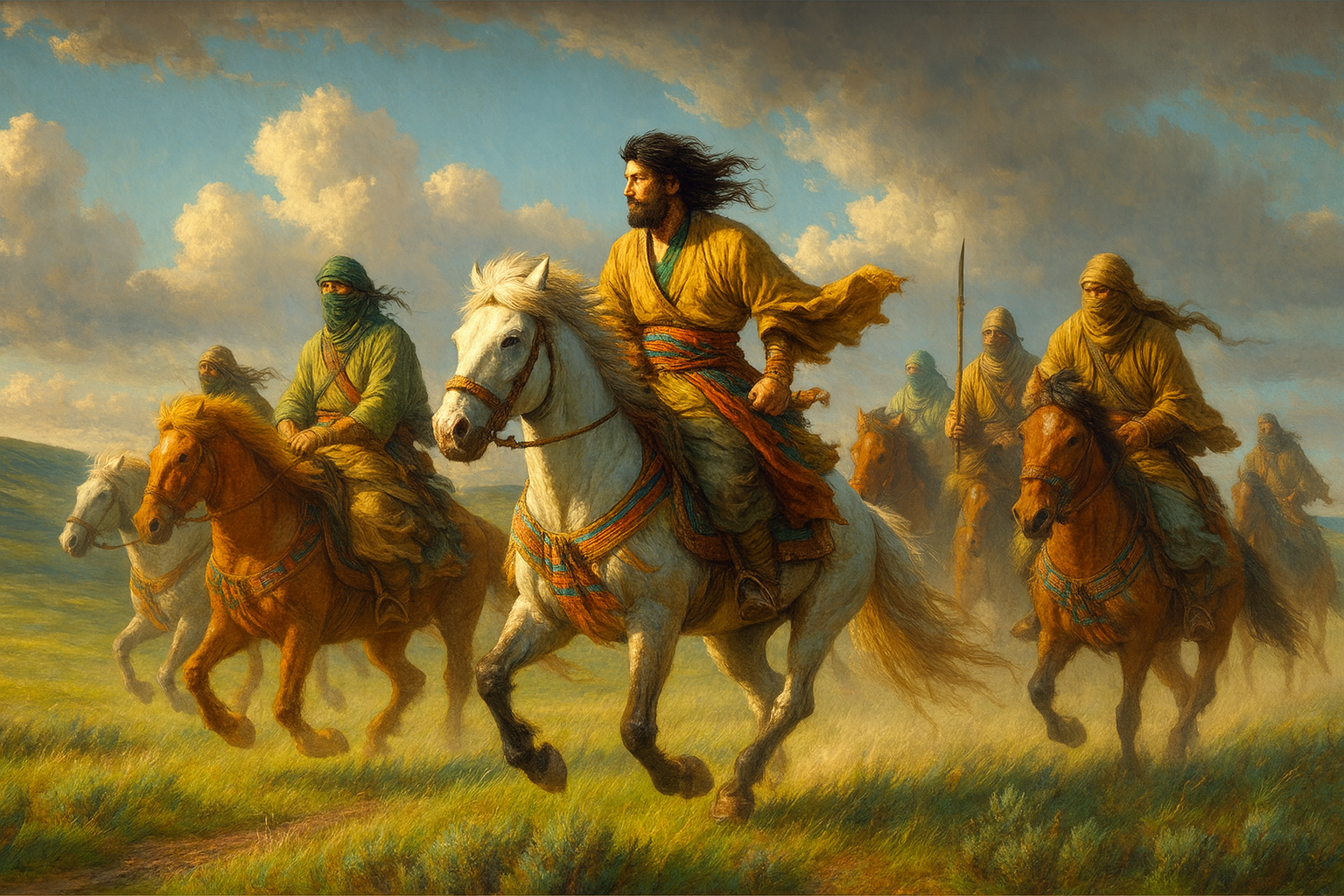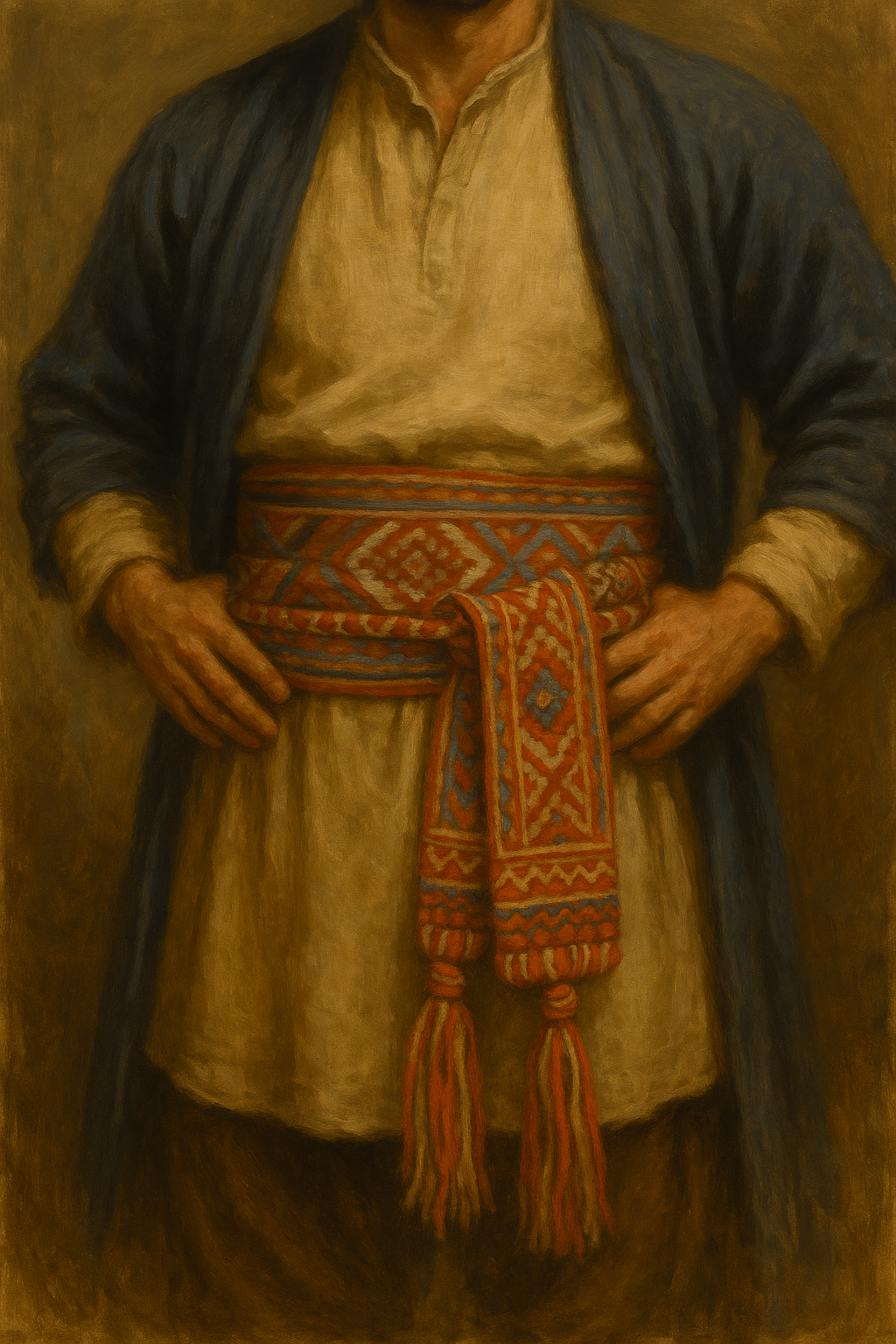Tuğsilk (Too-silk)
The Tuğsilk is a long, woven sash worn by members of the Aygir, the nomadic horsefolk of Tanaria’s open steppe. More than just clothing, it is a living record of identity, loyalty, and personal legacy. Traditionally wrapped around the waist, chest, or across the shoulders, a Tuğsilk is dyed in clan colors and intricately adorned with charms, stitches, and symbolic knots that reflect the wearer’s family, victories, and oaths.
Woven from horsehair, wool, and dyed thread, a Tuğsilk often includes strands from a rider’s first steed, an act of reverence and bond. Warriors sometimes wrap their Tuğsilk around the hilts of their weapons before battle, binding their honor to their blade. During rites of passage, marriage, or mourning, the sash is ritually wrapped, loosened, or even burned to reflect the turning of life’s cycles.
No two are the same. An elder’s Tuğsilk may be so layered with threadbare patches, iron beads, and stitched runes that it becomes a tapestry in its own right. To steal or desecrate someone’s Tuğsilk is one of the highest insults in Aygir culture, an act akin to cursing their ancestors.
History
The origin of the Tuğsilk predates the formal clans, tracing back to the First Riders, who are said to have knotted sashes from their horse’s mane as a show of thanks and mourning when a steed fell in battle. Over time, this evolved into a woven symbol of bond, identity, and remembrance. During the Migration Era, when the Aygir scattered and regrouped, Tuğsilks were how kin found one another again, each knot or thread pattern telling a story only family would recognize. In wars, they became marks of oathbinding and vengeance. In peace, they signaled alliances and promises between clans.
Significance
The Tuğsilk holds profound cultural, spiritual, and social significance for the Aygir people. It is not merely a garment, but a living symbol of identity, loyalty, and personal legacy. Worn from adolescence until death, the Tuğsilk marks important life milestones, births, bonds, victories, losses, through embroidered symbols, tied charms, and braided additions. Each thread tells a story; each knot records an oath.
To the Aygir, a Tuğsilk is both shield and standard. It announces who you are and where you come from. It carries the memory of your first mount, your family line, your deeds on the steppe. Warriors bind them to their blades or saddlehorns before battle. Shamans weave protective sigils into them before long migrations. To lose one is considered a spiritual amputation. To wear another’s Tuğsilk, without rite or right, is tantamount to theft of soul.
Even in death, the Tuğsilk remains with its owner, often burned with them or knotted around their grave marker. Clan elders say that the ancestors recognize the living by the threads they carry, and that no Aygir travels alone so long as their Tuğsilk is bound tightly.
Item type
Clothing / Accessory
Current Location
Related ethnicities
Rarity
Common among the Aygir, but uncommon outside their culture. Every Aygir is expected to own one by adolescence, and most own several throughout their life. However, outside of Aygir lands, true Tuğsilks are rare and often misunderstood as decorative belts or exotic scarves. A Tuğsilk seen on a foreign warrior usually signals a deep bond, past service to the Aygir, or a looted heirloom, one that might bring trouble if seen by the wrong clan.
Dimensions
Most Tuğsilks range from 6 to 12 feet (1.8–3.6 meters) in length and about 4 to 8 inches (10–20 cm) wide.
Base Price
a simple Tuğsilk (unadorned, utilitarian) might cost 5–10 silver pieces, roughly the price of a good wool cloak, but their personal, spiritual, and ancestral value far outweighs coin.





Comments